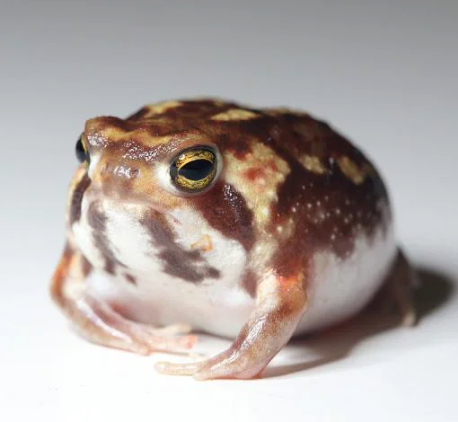Discover Exotic Rain Frog for Sale: Your Entrance to Distinct Amphibian Family Pets!
The Ideal Reptile Enclosures: How to Produce the Suitable Environment
Developing the excellent habitat for reptiles is not just regarding positioning them in a container or unit; it involves a thoughtful consideration of different aspects that add to their total health. From the dimension of the enclosure to the sort of substrate used, every element plays an important function in giving a setting where your reptile can grow. By recognizing the specific needs of your reptile species and implementing the right habitat setup, you can guarantee their wellness and joy in bondage.
Choosing the Right Room Dimension
When picking an unit dimension for reptiles, it is imperative to consider their natural actions and room needs to guarantee their wellness and health and wellness. When it comes to habitat room, various reptile types have varying needs. Arboreal varieties like chameleons or tree serpents need vertical room for perching and climbing, while earthbound varieties such as bearded dragons or leopard geckos need more flooring area for exploring and thermoregulation. Marine turtles like red-eared sliders require rooms with both water and acreage for swimming and basking.
A basic general rule is to provide sufficient area for the reptile to display all-natural habits, such as basking, hiding, climbing, and foraging. rain frog for sale. Inadequate area can lead to stress and anxiety, behavioral concerns, and even physical health issue. Units should additionally enable the positioning of proper heating and lights aspects, along with environmental enrichment products like rocks, branches, and hides. By carefully thinking about the details needs of the reptile types in inquiry, owners can create an ideal and improving environment that promotes general health and encourages natural actions.
Setting Up Proper Burner
To make sure the health and wellness of reptiles in their units, it is vital to thoroughly establish appropriate heating aspects. Reptiles are ectothermic creatures, indicating they depend on outside warm sources to control their body temperature. When establishing heating elements in a reptile enclosure, it is crucial to consider the particular temperature demands of the species you are caring for. Various reptiles have differing temperature level needs based on their natural environment, so it is vital to study and comprehend these demands.
One reliable and typical heating component for reptile rooms is a heat lamp or ceramic warmth emitter. These warm sources can be made use of to produce a temperature slope within the enclosure, permitting reptiles to relocate between warmer and cooler locations as needed. In addition, under-tank hot pad or warmth mats can be used to supply tummy warmth, which is especially useful for reptiles that require additional heat to help in food digestion.
Monitoring the temperature within the unit using a thermometer is important to guarantee that the home heating elements are preserving the proper temperature level view it now range for your reptile. On a regular basis check and adjust the burner as required to create a comfortable and healthy and balanced environment for your scaly good friend.
Picking Appropriate Lighting Fixtures

Offering the Suitable Substratum
Selecting the proper substratum is crucial for developing a ideal and comfortable environment for reptiles in their enclosures. Some reptiles, such as desert-dwelling species like bearded dragons, grow on substratums like calcium sand or reptile carpeting, while others, like round pythons, favor coconut husk or aspen bed linens to keep moisture levels.
Additionally, the size of the reptile must likewise influence your choice of substrate, as hatchlings might call for a finer material to stop consumption. Avoid substratums that can create impaction, such as loose substrates like sand or crushed rock, specifically for reptiles recognized to ingest their bedding. Routinely cleaning and changing the substratum is crucial to guarantee a clean and sanitary atmosphere for your reptile. By choosing the optimal substrate, you can add to the general health and health of your scaly companion.
Decorating for Enrichment and Convenience
Taking into consideration the substratum's duty in giving a structure for all-natural habits and preserving a suitable atmosphere, improving the reptile room with appropriate decorations is essential for both enrichment and comfort. When decorating the unit, it is crucial to take into consideration the reptile's species-specific demands and habits to produce a space that advertises physical and psychological well-being. By incorporating a selection of designs that imitate the reptile's natural environment, proprietors can ensure their pet's convenience and promote their natural reactions, eventually leading to a happier and much healthier reptile.
Final Thought

Developing the ideal environment for reptiles is not simply about putting them in a tank or room; it includes a thoughtful factor to consider of various aspects that add to their overall wellness.Choosing the ideal substrate is necessary for developing a appropriate and comfy setting for reptiles in their enclosures. Some reptiles, such as desert-dwelling types like bearded dragons, prosper on substratums like calcium sand or reptile carpeting, while others, like ball pythons, choose coconut husk or aspen bed linen to preserve moisture degrees.
By including a variety of decorations that imitate the reptile's natural habitat, proprietors can guarantee their family pet's convenience i was reading this and boost their all-natural reactions, ultimately leading to a happier and healthier reptile.
In conclusion, creating the perfect habitat for reptiles includes choosing the proper enclosure size, heating components, lighting components, substratum, and decors.